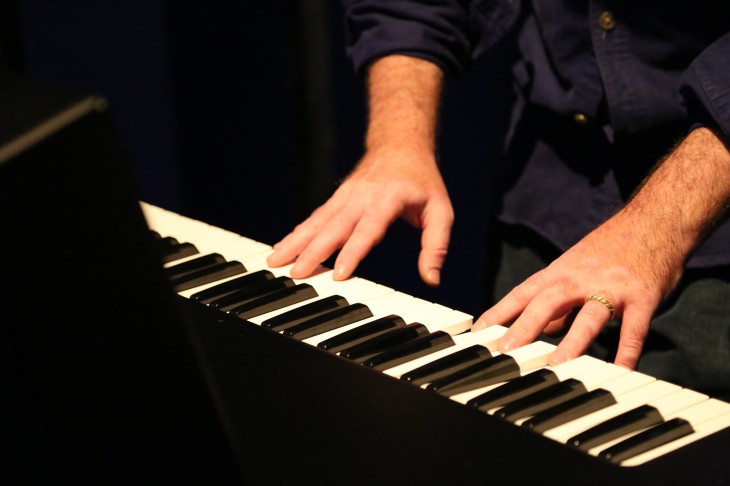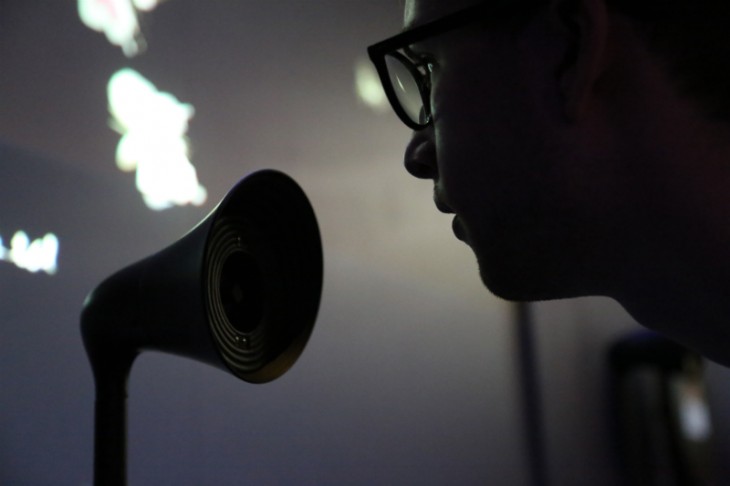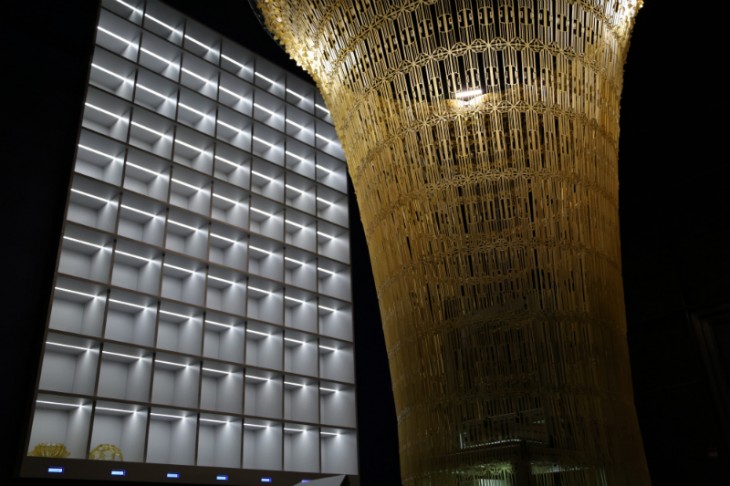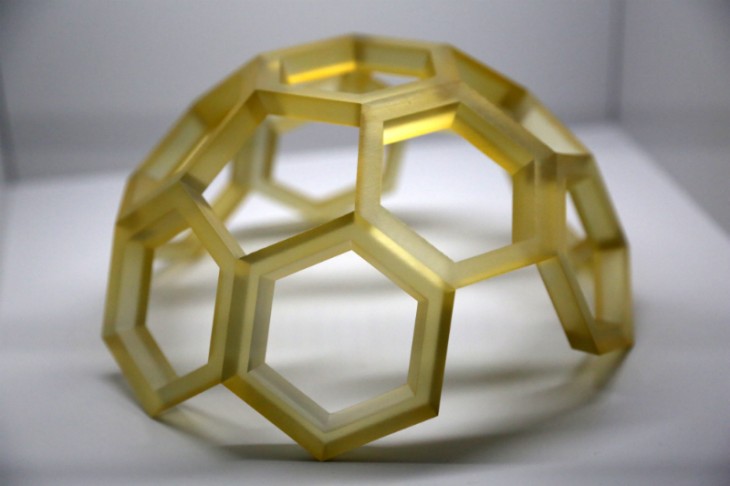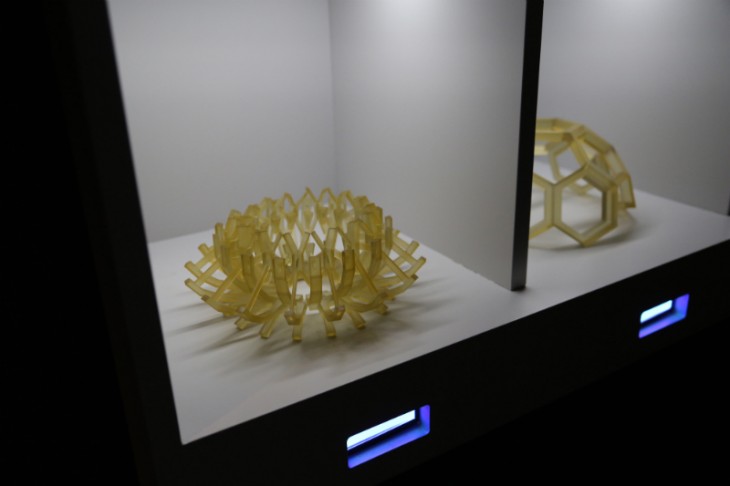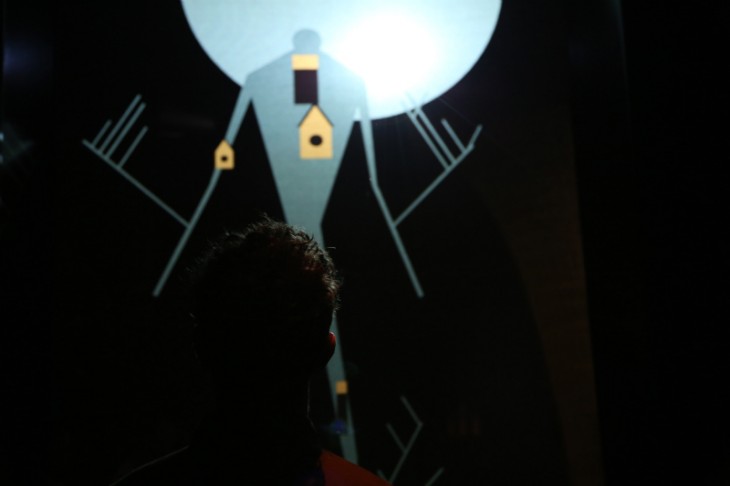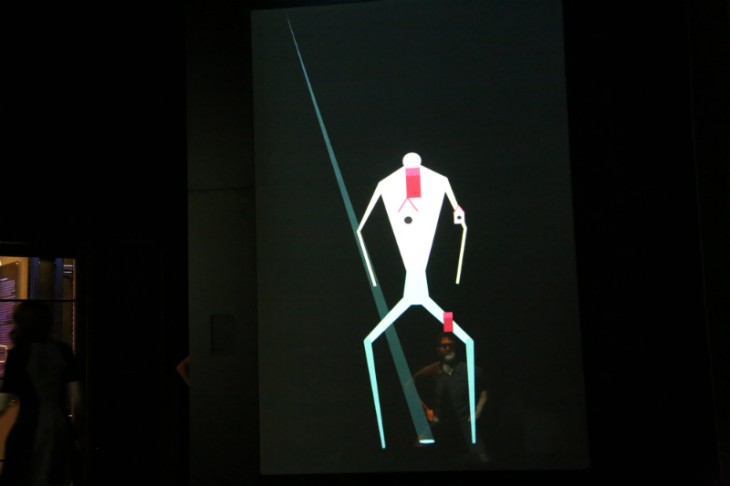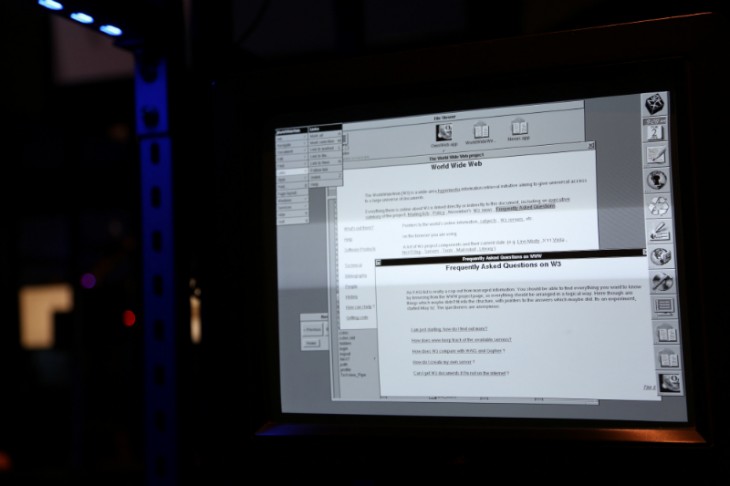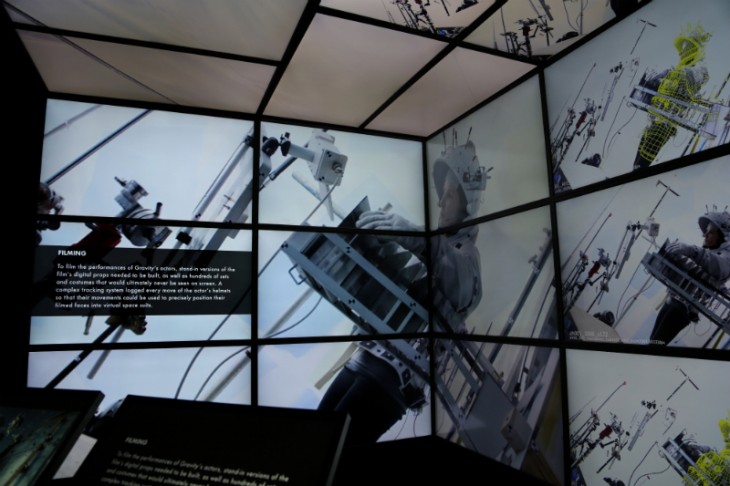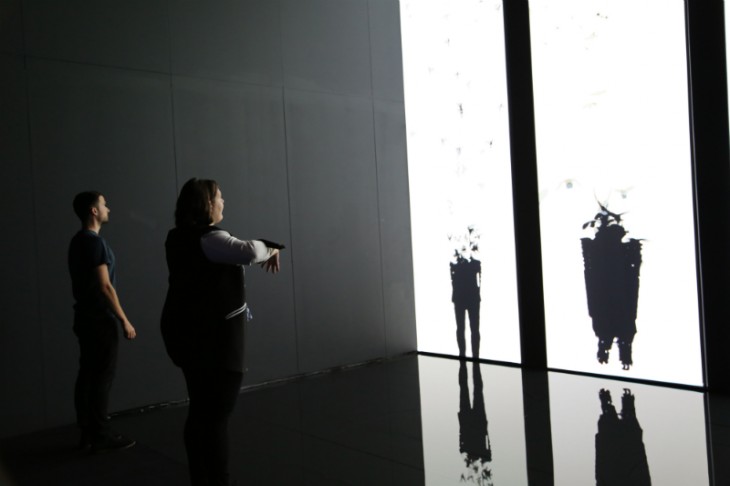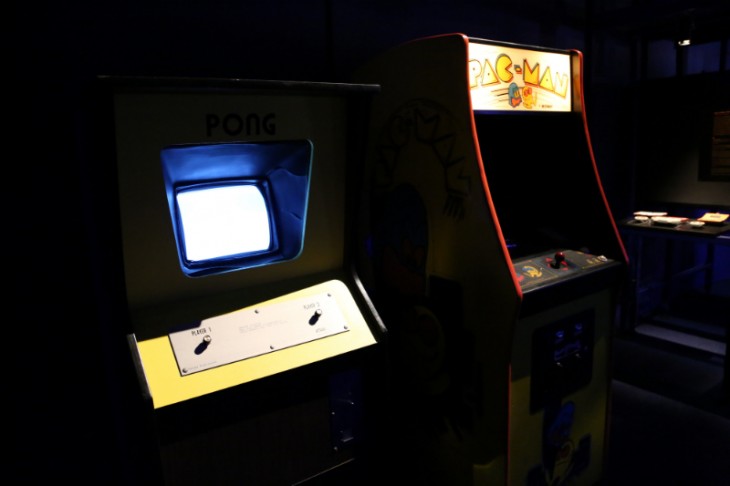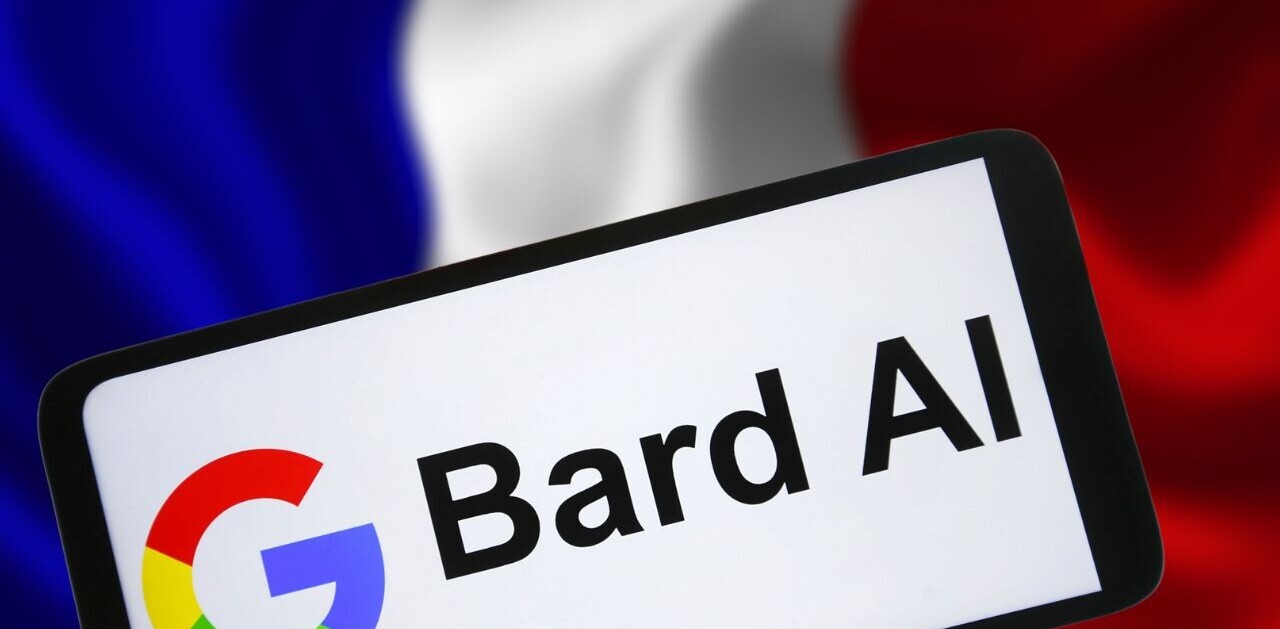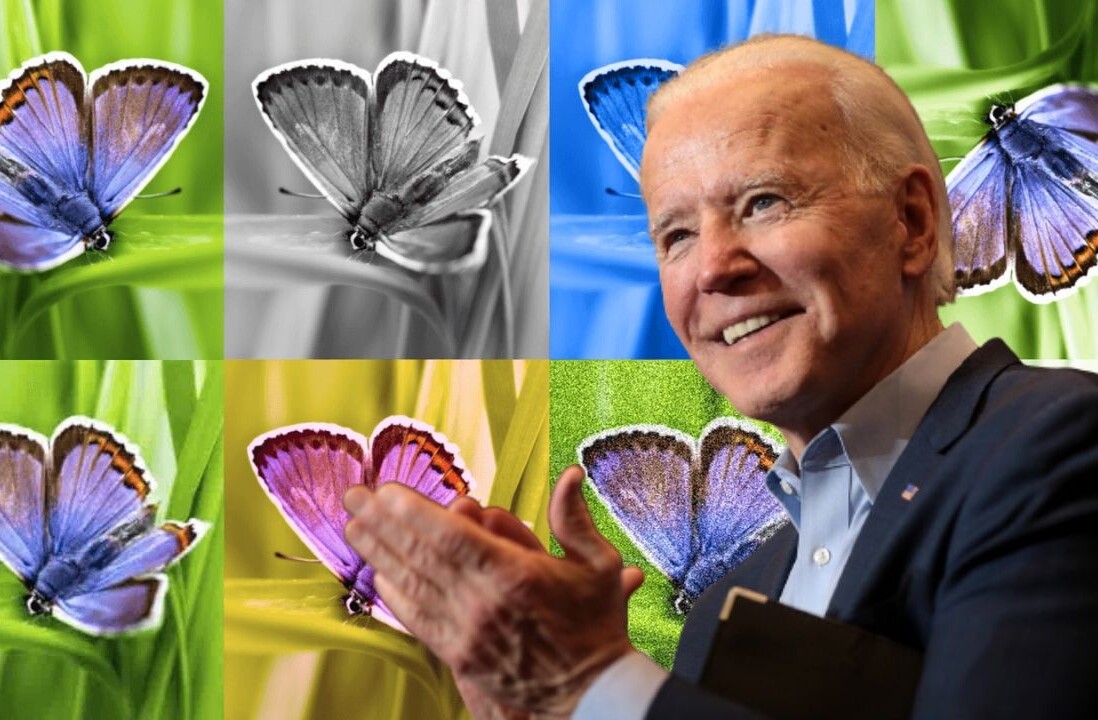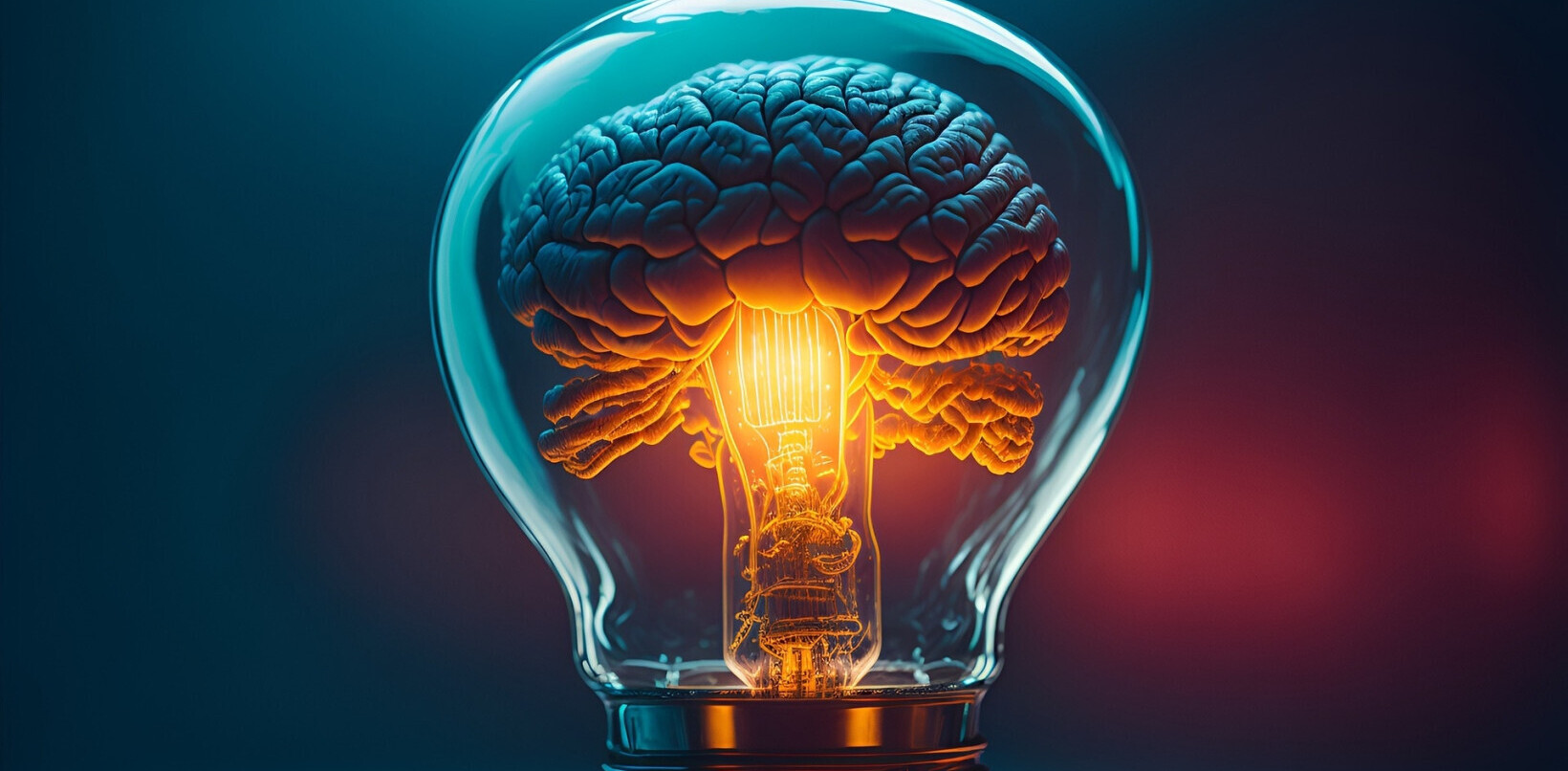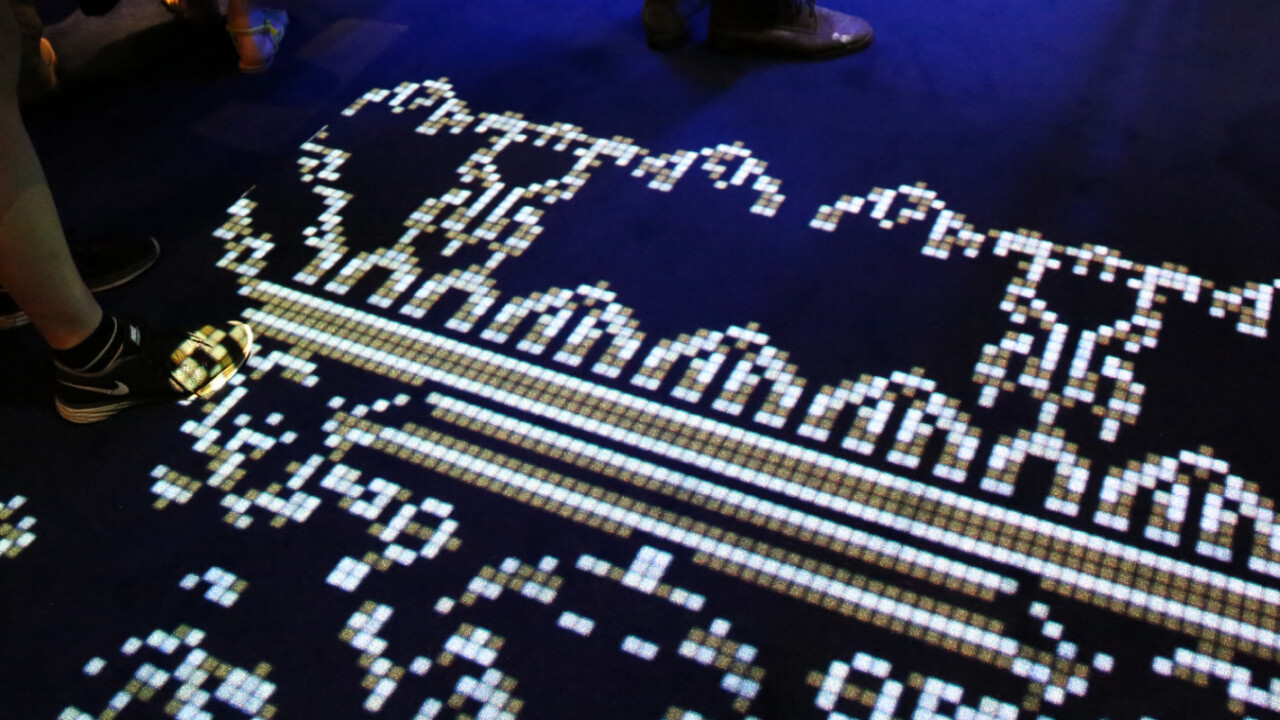
Art is often perceived in two ways. Physical and digital. The former reminds us of tradition; famous painters, illustrators and sculptors, while the latter conjures up images of a graphic designer hunched over a MacBook and Wacom tablet.
But a new art form is emerging. This one uses technology as the canvas and code as the paint. It’s inherently digital, but with a physical presence that goes beyond the screen on your PC, laptop, smartphone or tablet.
Google calls it DevArt.
To help recognise the leaders in this field, a series of DevArt installations have been set up in London’s Barbican Centre. It’s part of a larger exhibition called Digital Revolution, which looks at technology’s evolving influence on film, music, video games and other creative media.
Three of the DevArt projects were commissioned by Google and curious minds have been able to follow their project from concept to fruition online. A fourth was selected as part of a larger DevArt competition that challenged developers with creative flair to push the boundaries of code, technology and art.
Play the World
What if you could tap into every radio station around the world and create a musical mash-up based on the tunes they’re pumping out? It’s a crazy idea, but one that Zach Lieberman from New York has managed to realize.
Musical notes sourced from songs across hundreds of stations are matched with the individual piano keys, creating a unique and spontaneous sound. You never know what sample will be sourced next, but the note-matching ensures everything is kept in tune. Lieberman’s instrument is also surrounded by a series of speakers and displays that tell you where the sounds are coming from. Strange and unusual, but utterly enthralling to use.
When I first started it, it sounded really, really terrible,” Lieberman admits with a chuckle. “It sounded really cacophonous and kind of crazy, but there were certain moments when I was just so happy. So for example, in reggae music, sometimes you’ll get this reggae horn right at the end of the song, or in a soccer game when the commentator is yelling ‘Goal!’ As soon as I heard those sounds coming through, I knew that it would sound really beautiful. I could suddenly hear chanting, prayer music, classical music and pop music.”
Wishing Wall
At some point in my childhood, I stopped making wishes. Once the harsh realities of life make themselves apparent, the “magic” of youth begins to dissipate. I suspect others feel the same and it’s why Wishing Wall, created by artist-duo Varvara Guljajeva and Mar Canet, is so powerful and entertaining.
Three microphones shaped like flowers are set in front of a wall where digital butterflies can be seen dancing back-and-forth. Once you’ve read your wish out loud, the message will appear on the wall in a font that makes it look handwritten. The wish will then morph into a colorful butterfly, which will join its siblings or land on your outstretched arm.
“I’m really curious to see what people wish for,” Canet said. Is it about money, health, or living in a better location? A moment ago a lady here was wishing to have a million pounds! People can wish for whatever they want.”
Co(de)factory
A strong community has already emerged around 3D printing. Despite its allure and consistent, widespread media attention, the pursuit is still best described as a niche. However, most people haven’t tried 3D printing (yet) and still wonder what the fuss is all about.
At the heart of this installation is an open-source 3D printer. Visitors can create their own objects using Android tablets and a curator will decide which ones are manufactured and added to the master collection. All finished pieces will be uploaded to an online gallery and slowly, the chosen pieces will fill a monstrous bookshelf flanking the printer.
Les metamorphoses de Mr. Kalia
This particular installation was selected as the overall DevArt competition winner. It uses a giant portrait canvas to display the primary character, Mr Kalia, as he undergoes a number of surreal transformations that integrate both man-made and natural objects. Anyone can stand behind the semi-opaque canvas, however, and direct Mr Kalia with their entire body. The skeleton-tracking is spot-on and means no two performances are ever the same.
The art style used in ‘Les metamorphoses de Mr. Kalia’ is wonderful. Everything is constructed from clean, colorful 2D shapes that fit together like modern cubism. The colors palette has a European flavor too – it reminds me of the illustrated credit scenes found in many Pixar films. The story constructed by Beatrice Lartigue and Cyril Diagne is open to interpretation, but the ambient, atmospheric soundtrack gives it a slow, relaxing feel. Unlike your favorite Nintendo Wii or Xbox 360/Xbox One Kinect game, you won’t be jumping up and down like a man possessed for this one.
“Sometimes you ned to liberate the code,” Steve Vranakis, executive creative director for the Google Creative Lab said. “Sometimes you need to take those characters off the screen and put them in environments like this. This is a very creative environment – this is a world-renowned art gallery! So to have this type of art, done by these types of people – developers who would never generally speaking be in these types of places – is a really nice thing to be able to do.”
He added: “This is very much the coming together of art and science. What we’re using the technology and science part for is to amplify that idea.”
The DevArt installations open to the public today as part of the Barbican’s Digital Revolution exhibition. They will remain in London until September 14, after which they will be taken to other locations around the world.
Next: The rest of the Digital Revolution exhibition…
Before examining the DevArt installations, I prowled the rest of the Digital Revolution exhibition to see what other technological curiosities were on show. Below are just a smattering of the classic machines and creative exhibits that visitors can experience at the Barbican Centre.
Bonus! Here’s a video of me flapping about.
Get the TNW newsletter
Get the most important tech news in your inbox each week.


